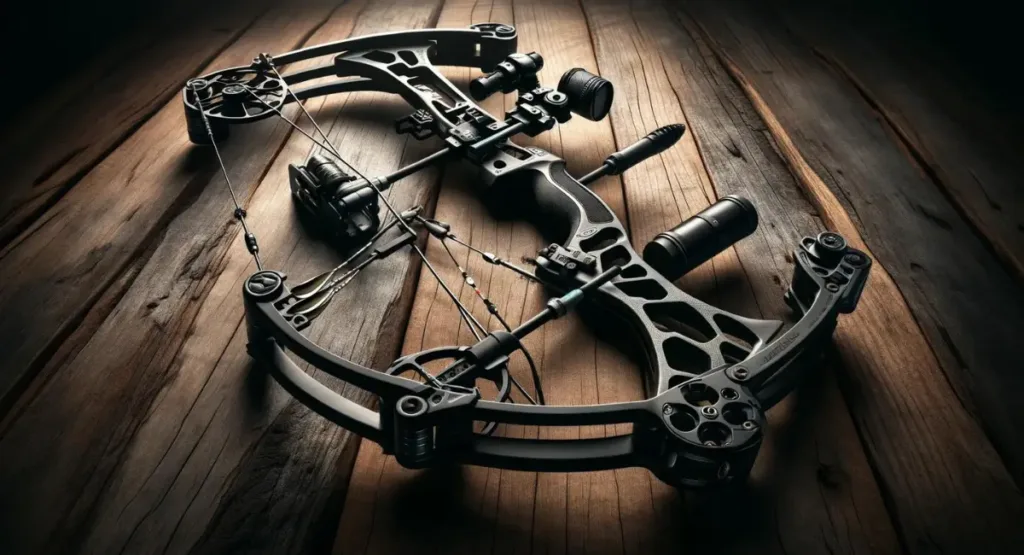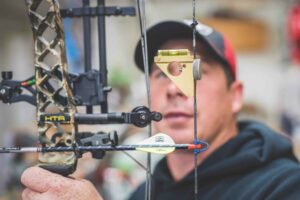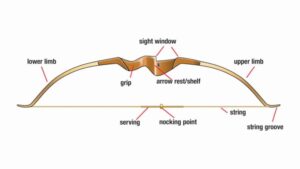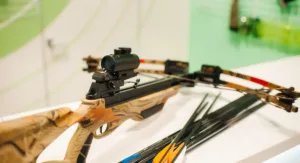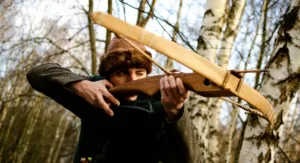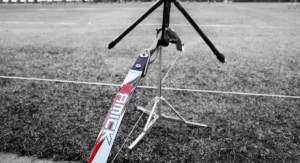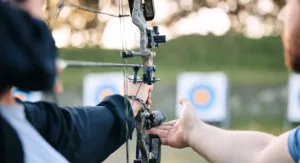When it comes to hitting that bullseye or bringing down that trophy buck, archers and hunters know that their success isn’t just about their skills—equipment quality plays a crucial role as well. The compound bow stands out as one of the most efficient tools in an archer’s arsenal. However, its efficiency is closely related to its precision and quality.
Here’s a definitive guide to the ten must have compound bow components for yourself as an archer, whether you’re a bow technician fine-tuning your instrument or a bow hunter looking to make the most of your gear. You can master one-shot, one-kill by following this blueprint, whether you’re overhauling your rig or looking for some upgrades.
Frame for a compound bow
Your bow’s backbone, the frame, plays a key role in providing structural support, as well as contributing to your shooting experience. Bow geometry and materials are crucial. For reliable accuracy and enhanced performance, a well-built frame should be lightweight without sacrificing integrity.
Here’s why it’s so important.
When you are shooting your bow, a solid frame ensures it will provide a stable platform for aiming and firing. The bow frame should also be adjustable to fit the shooter’s frame and preferences.
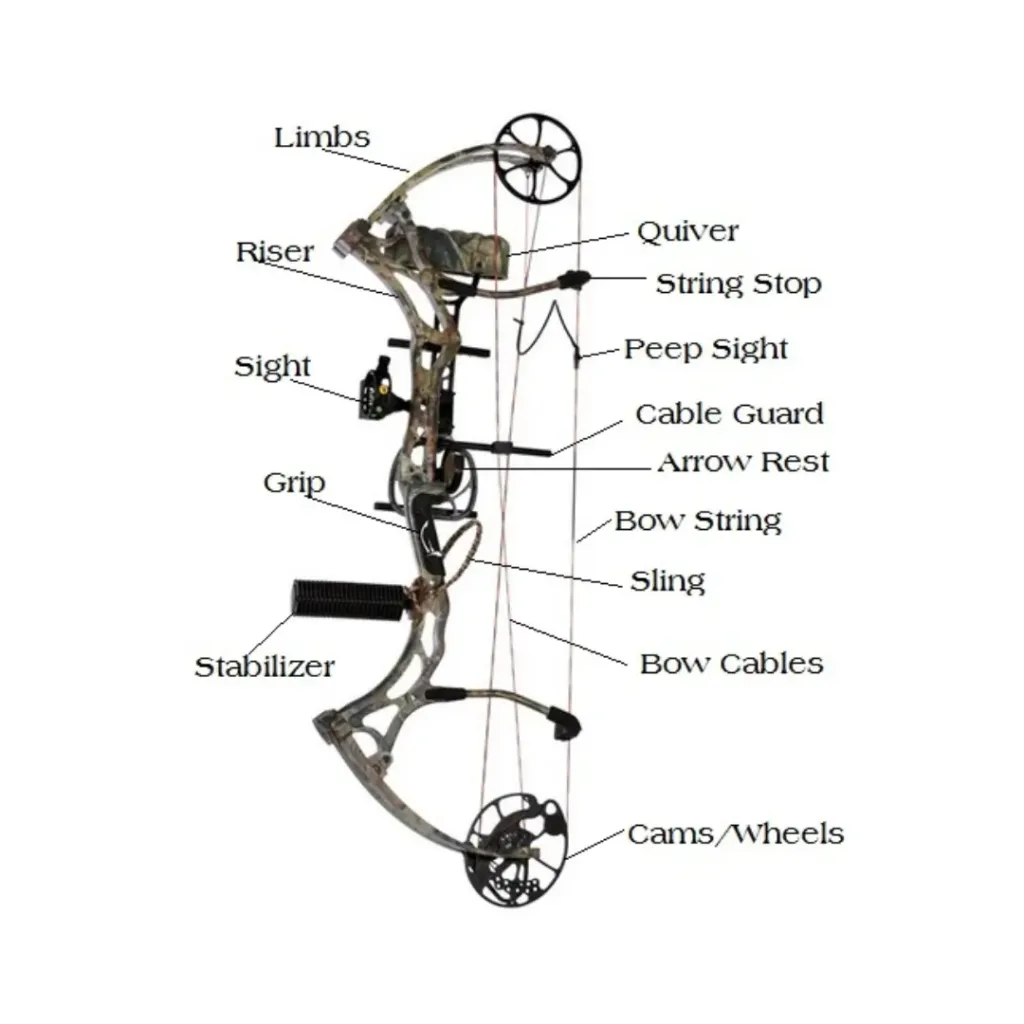
Cables and bowstrings
Bowstrings and cables are the unsung heroes of compound bows. High-quality strings and cables are made of durable materials that maintain their shape and strength over many shots, ensuring consistency and reliability. They store and release the kinetic energy needed to propel the arrow forward.
Science behind it
Bow strings and cables are subjected to extreme tension and compression, which causes them to wear out over time. Regular maintenance, including waxing, can extend the lifetime of strings and cables and preserve bow performance.
The bow sights and scope
Having a reliable bow sights or scope is crucial to making sure you make the right shot, which is why it is necessary to get one that offers the right balance between pin visibility and pin brightness, as well as features that will suit your shooting style and the shooting environment in which you will be shooting.
How to Choose the Right Bow Sight
It is often recommended that beginners start with a fixed sight that has multiple pins. As your skills and experience grow, you should consider a single-pin or adjustable sight that will streamline the shooting process for you.
The bow arrow rest
A bow arrow rest is a small, but important compound bow components that has a significant effect on the flight of an arrow. There are several types of arrow rests, from simple to drop-away, and some are designed specifically for different types of arrows.
Focusing on Fletchings
It is a well-known fact that hunters use drop-away rests for stability and to minimize fletching contact, thus reducing arrow deflection and stabilizing the flight of the arrow.
The bow stabilizer
Bow Stabilizers are similar to shock absorbers on a bike, except that they are installed on bows. They minimize hand shock, absorb excess energy, and reduce torque that is caused by bow hold motions. A long stabilizer can assist in aiming and holding the bow steady during the shot.
A Balancing Act
It is important to consider the length and weight of your stabilizers. Short stabilizers are faster to maneuver, while longer stabilizers are easier to balance, especially for long-range shots.
The Arrow Release Aid
There are several types of releases, such as trigger releases and tension releases, each with its own advantages. Fingers on the strings were the days of accuracy and consistency; a quality release aid can boost your accuracy and consistency by eliminating human error.
Tension or triggers?
The tension release requires a bit more finesse, since it only releases the string when the user reaches a specific weight. Trigger releases offer a push-button style of operation.
Arrow Quiver
A quiver serves as the anchor for your arrows. It keeps your arrows at the ready and contributes to the balance of your bow. No matter whether your quiver is hip-mounted, back-mounted, or bow-mounted, it should keep your arrows secure but easy to draw.
Noise’s drawback
As you are aware, quivers can cause quite a bit of noise, so you’ll want a quiver that minimizes this type of noise if you hunt.
The peep sight.
A peep sight ensures a consistent anchor point and eye position, as well as ensuring a consistent aiming process. Most modern bows come with a string that makes it possible for a peep sight to be installed.
Ensure accuracy.
If you are using a peep sight that is properly adjusted, it will be easier for you to align the front and rear sights of your bow, giving you an additional reference point to ensure that you are aiming properly.
The dampeners
It is a must that good dampeners are added to almost any part of the bow where vibrations are produced, and in order for those who value silence and would like to reduce vibrations within their belief, good dampeners must be added.
Hiding from the Game
The hunting world is a noisy and vibration-based world. Silent bows are deadly weapons, and dampeners are essential to keeping them silent and undetected.
The Arrow Broadhead
Lastly, but certainly not least, is the cutting edge of the stick-broadheads. This is the most crucial compound bow components for hunters. There are many different types of broadhead available on the market, such as fixed-blade wide heads to mechanical broadheads, each with different advantages and shooting preferences.
Optimizing performance
It is important to test several different types of broadheads before hitting the field in order to ensure that they fly as accurately as possible.
Conclusion : Selecting Right Compound Bow Components
A compound bow is more than just its parts—it is about how they work together that makes it so effective for archers and hunters alike. When you invest in the ten compound bow components outlined in this comprehensive article, you’re not just improving the functionality of your bow; you’re equipping yourself with the tools to become an efficient, accurate, and successful participant in one of the earliest human traditions by investing in them.
Precision and technique play a vital role in archery and bow hunting. When these elements are combined with high-quality equipment, you are ready to tackle any wilderness challenge that you may come across.
Recent Posts
- 5 Basic Steps To Tune A Bow With Advanced Techniques
- 7 Essential Parts of a Bow: A Comprehensive Guide for Archery Enthusiasts
- A Complete Guide To Essential Parts Of A Crossbow
- A Comprehensive Guide To Pick Best Budget Crossbows
- A Comprehensive Samick Sage Review For Beginner Archers
- An Ultimate Bow Size Chart Guide For Archers

